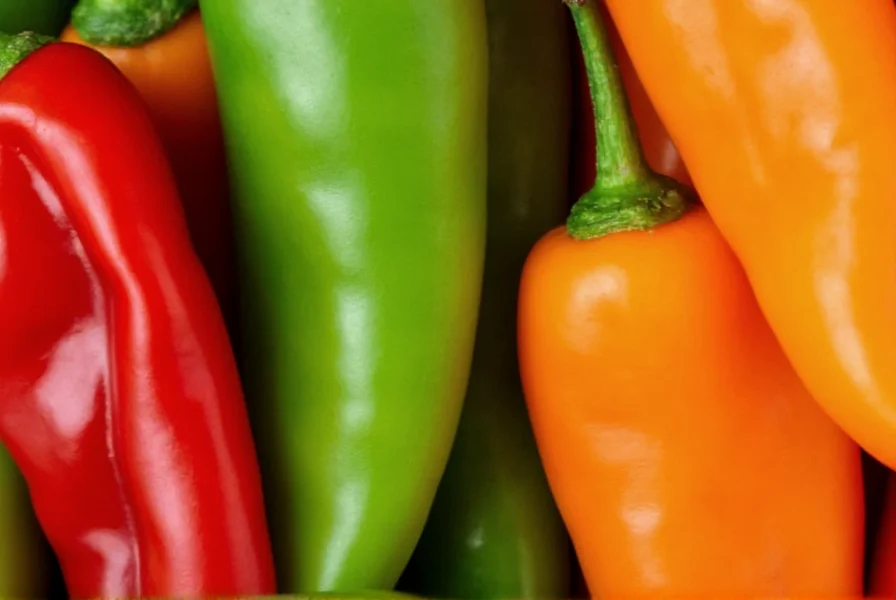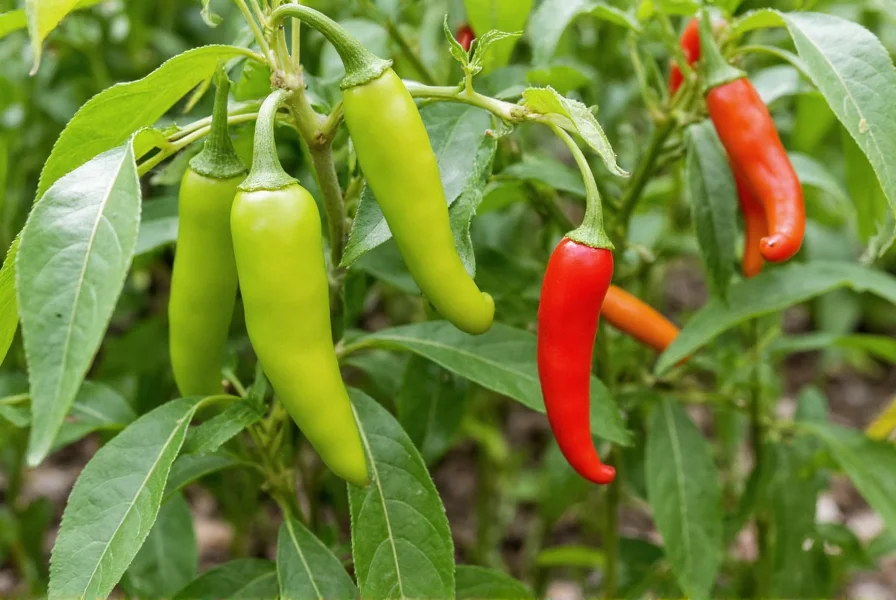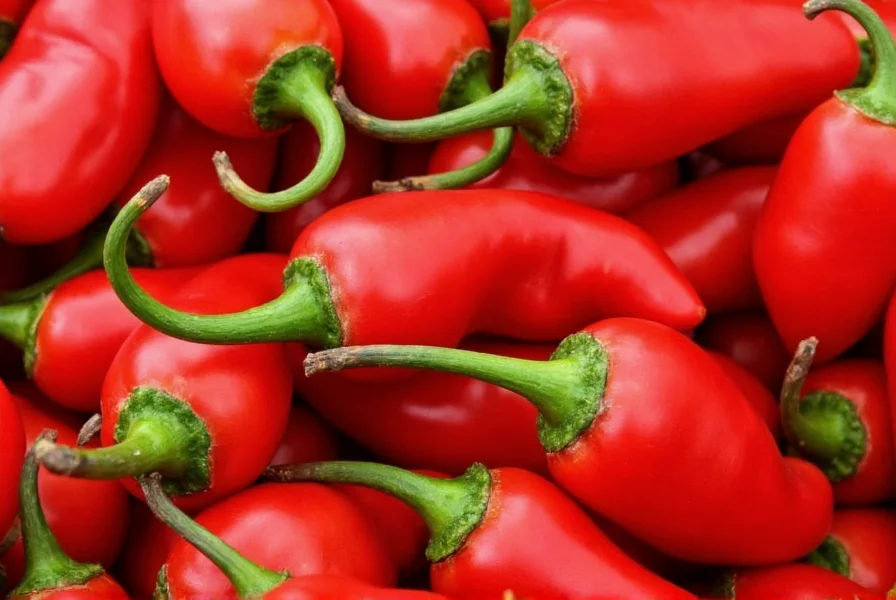Chili peppers, scientifically classified under the genus Capsicum in the nightshade family (Solanaceae), represent one of the world's most widely used spices. These vibrant fruits contain capsaicinoids, primarily capsaicin, which trigger the sensation of heat when consumed. Unlike sweet bell peppers (which are also Capsicum species but lack capsaicin), chili peppers deliver varying degrees of pungency that culinary enthusiasts and scientists measure using the Scoville Heat Unit (SHU) scale.
The five primary domesticated species of chili peppers include Capsicum annuum (bell peppers, jalapeños), C. chinense (habaneros, Scotch bonnets), C. frutescens (tabasco, bird's eye), C. baccatum (aji peppers), and C. pubescens (rocoto). Each species contains numerous cultivars with distinct flavor profiles beyond just heat—some offer fruity notes, others earthy or smoky characteristics.
Origins and Global Spread
Archaeological evidence traces chili peppers back to 6000 BCE in regions spanning modern-day Mexico to Peru. Indigenous peoples cultivated these plants long before European contact. Christopher Columbus mistakenly called them "peppers" due to their pungency resembling black pepper (Piper nigrum), though they're botanically unrelated. Portuguese and Spanish traders subsequently spread chili peppers across Asia, Africa, and Europe during the 15th and 16th centuries, where they became integral to local cuisines.
Understanding Chili Pepper Heat
The Scoville scale, developed by pharmacist Wilbur Scoville in 1912, quantifies chili pepper heat by measuring capsaicin concentration. Originally determined through human taste panels diluting pepper extract until heat becomes undetectable, modern laboratories now use high-performance liquid chromatography (HPLC) for precise measurement.
| Chili Pepper Variety | Scoville Heat Units | Common Uses |
|---|---|---|
| Bell Pepper | 0 SHU | Raw in salads, stuffed dishes |
| Jalapeño | 2,500–8,000 SHU | Salsas, nachos, pickled |
| Serrano | 10,000–23,000 SHU | Pico de gallo, hot sauces |
| Habanero | 100,000–350,000 SHU | Caribbean sauces, marinades |
| Ghost Pepper | 855,000–1,041,427 SHU | Extreme heat challenges |
When handling extremely hot varieties like ghost peppers or Carolina reapers (which exceed 1.5 million SHU), experts recommend wearing gloves to prevent skin irritation. The burning sensation occurs because capsaicin binds to TRPV1 receptors in the mouth and skin, which normally detect heat—tricking the brain into perceiving actual temperature increase.

Nutritional Profile and Health Considerations
Chili peppers deliver impressive nutritional benefits beyond their flavor contribution. A single raw jalapeño (14g) contains:
- Nearly 9% of the daily recommended vitamin C
- 2% of daily vitamin B6
- 1% of daily vitamin A
- Trace amounts of potassium and magnesium
- Negligible calories (about 4 per pepper)
Research suggests capsaicin may offer several health benefits, including temporary metabolism boost, pain relief through endorphin release, and potential anti-inflammatory properties. However, individuals with gastrointestinal sensitivities should consume spicy foods moderately, as excessive intake can trigger heartburn or digestive discomfort.
Culinary Applications Worldwide
Chefs and home cooks utilize chili peppers across global cuisines in diverse preparations:
- Mexican cuisine: Complex moles featuring multiple chili varieties
- Thai cooking: Fresh bird's eye chilies in curries and dipping sauces
- Indian dishes: Dried red chilies in tempering oils for flavor infusion
- Korean food: Fermented gochugaru in kimchi and gochujang
- Caribbean recipes: Scotch bonnet peppers in jerk seasonings
Cooking techniques significantly affect perceived heat. Removing seeds and white membranes (where capsaicin concentration is highest) reduces pungency, while cooking methods like roasting or smoking can mellow heat while enhancing flavor complexity. For those seeking to reduce spiciness after consumption, dairy products containing casein protein (like milk or yogurt) effectively neutralize capsaicin better than water.
Growing Chili Peppers
Gardeners can successfully cultivate chili peppers in most climates with proper care. These plants require:
- At least 6-8 hours of direct sunlight daily
- Well-draining soil with pH between 6.0-7.0
- Consistent moisture without waterlogging
- Warm temperatures (70-85°F / 21-29°C ideal)
Starting seeds indoors 8-10 weeks before the last frost date typically yields best results. Most varieties require 60-90 days from transplanting to harvest. Interestingly, stressing the plants slightly through controlled water reduction can increase capsaicin production, resulting in hotter peppers—a technique some specialty growers employ intentionally.

Safety and Handling Tips
While generally safe for consumption, proper handling prevents discomfort:
- Always wash hands thoroughly after handling hot peppers
- Avoid touching face, especially eyes, when working with chilies
- Use separate cutting boards for extremely hot varieties
- Consider wearing food-safe gloves when preparing super-hots
- Store dried chilies in airtight containers away from moisture
Understanding what is chili pepper goes beyond recognizing its heat—it encompasses appreciating its botanical complexity, cultural significance, and versatile applications in food and beyond. Whether you're a culinary novice exploring mild poblano peppers or an experienced chef working with Carolina reapers, recognizing the characteristics of different chili varieties enhances both cooking experiences and appreciation for this remarkable plant.
Frequently Asked Questions
What makes chili peppers hot?
Chili peppers contain capsaicinoids, primarily capsaicin, which activate TRPV1 receptors in your mouth and skin that normally detect heat. This triggers a neurological response that your brain interprets as a burning sensation. The concentration of these compounds determines a pepper's heat level on the Scoville scale.
How can I reduce the heat of a chili pepper?
To reduce heat, remove the seeds and white pith (placenta) inside the pepper, as these contain the highest concentration of capsaicin. Cooking methods like roasting or simmering in dairy-based liquids can also mellow the heat. When consuming overly spicy food, drinking milk or eating yogurt provides more relief than water, as the casein protein binds to and dissolves capsaicin.
Are chili peppers and red pepper the same thing?
Not exactly. "Chili peppers" refers to the fresh or dried fruits of Capsicum plants, while "red pepper" can mean either dried and ground chili peppers (like cayenne powder) or a specific type of pepper. Black pepper (Piper nigrum) is a completely different plant unrelated to chili peppers, despite the similar name given by early European explorers.
Can you eat chili peppers raw?
Yes, many chili peppers are commonly eaten raw in salsas, salads, and as garnishes. Mild varieties like poblano or Anaheim peppers are often roasted first, while hotter varieties like serranos or habaneros are frequently used raw in small quantities to add heat to dishes. Always handle hot varieties with care and wash hands thoroughly after preparation.
What's the difference between chili peppers and bell peppers?
Both are Capsicum annuum varieties, but bell peppers lack the capsaicin that makes chili peppers hot. Bell peppers have been selectively bred for sweetness and zero Scoville units, while chili peppers contain varying levels of capsaicin. Bell peppers also typically have thicker walls and a blockier shape compared to most chili varieties.











 浙公网安备
33010002000092号
浙公网安备
33010002000092号 浙B2-20120091-4
浙B2-20120091-4